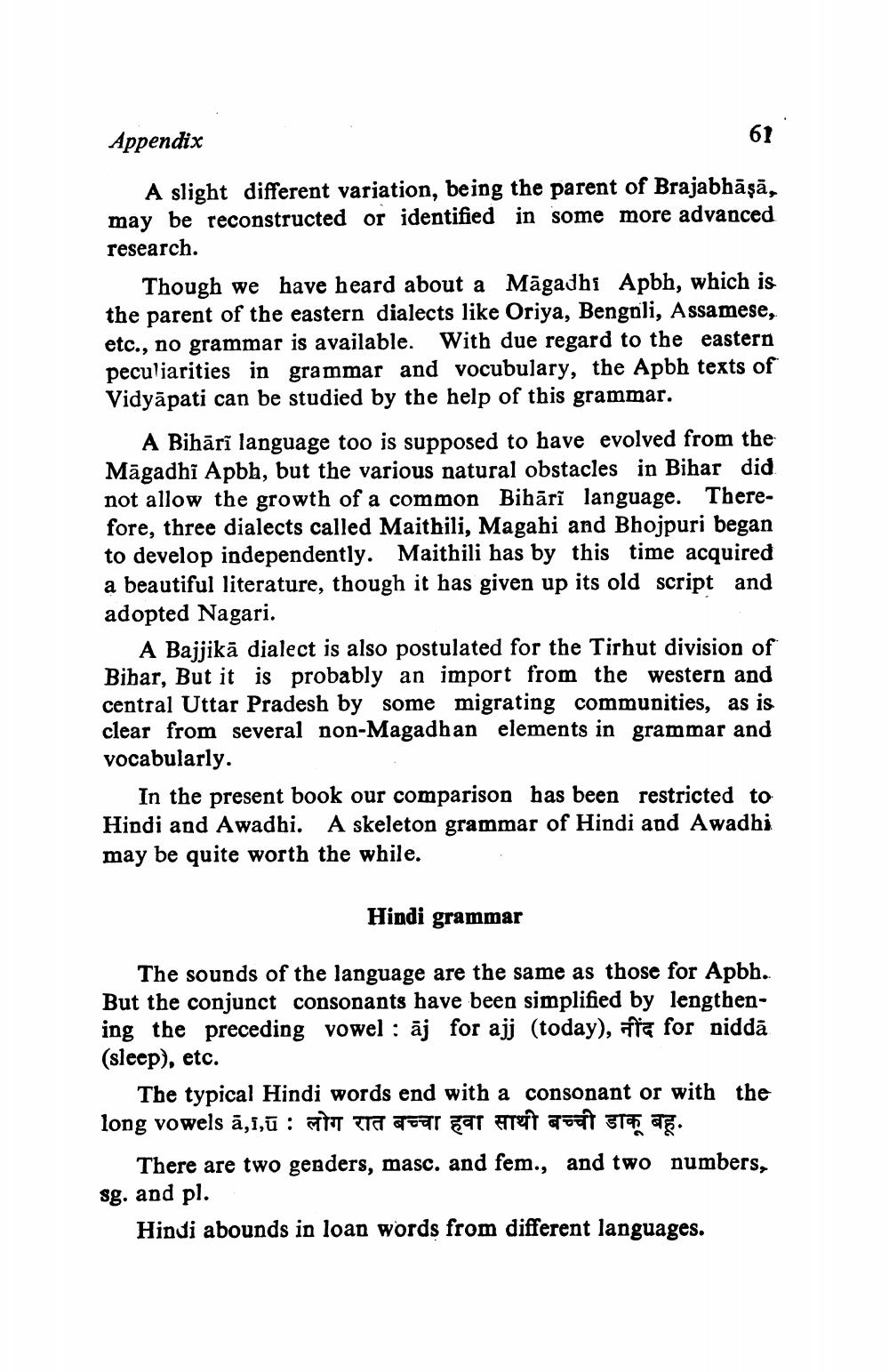________________
Appendix
A slight different variation, being the parent of Brajabhāṣā, may be reconstructed or identified in some more advanced research.
Though we have heard about a Māgadhi Apbh, which is the parent of the eastern dialects like Oriya, Bengali, Assamese, etc., no grammar is available. With due regard to the eastern peculiarities in grammar and vocubulary, the Apbh texts of Vidyāpati can be studied by the help of this grammar.
A Bihārī language too is supposed to have evolved from the Māgadhi Apbh, but the various natural obstacles in Bihar did not allow the growth of a common Bihārī language. Therefore, three dialects called Maithili, Magahi and Bhojpuri began to develop independently. Maithili has by this time acquired a beautiful literature, though it has given up its old script and adopted Nagari.
A Bajjikā dialect is also postulated for the Tirhut division of Bihar, But it is probably an import from the western and central Uttar Pradesh by some migrating communities, as is clear from several non-Magadhan elements in grammar and vocabularly.
In the present book our comparison has been restricted to Hindi and Awadhi. A skeleton grammar of Hindi and Awadhi may be quite worth the while.
Hindi grammar
The sounds of the language are the same as those for Apbh. But the conjunct consonants have been simplified by lengthening the preceding vowel : āj for ajj (today), fia for nidda (sleep), etc.
The typical Hindi words end with a consonant or with the long vowels ā,1,ū : TT TTT Tear at tot coat 19 a.
There are two genders, masc. and fem., and two numbers, sg. and pl.
Hindi abounds in loan words from different languages.




